On the night of June 9, 1912, the small town of Villisca, Iowa, was rocked by a horrific crime. The Villisca Axe Murders saw the brutal slaying of eight people, including Josiah B. Moore (43), his wife Sarah Moore (39), their four children (Herman Montgomery Moore, 11, Mary Katherine Moore, 10, Arthur Boyd Moore, 7, and Paul Vernon Moore, 5), along with two visiting children, Ina Mae Stillinger (8) and Lena Gertrude Stillinger (12). An unknown assailant wielded an axe and left a gruesome scene behind. Despite numerous investigations, the crime remains unsolved, making it one of the most perplexing murder mysteries in American history.
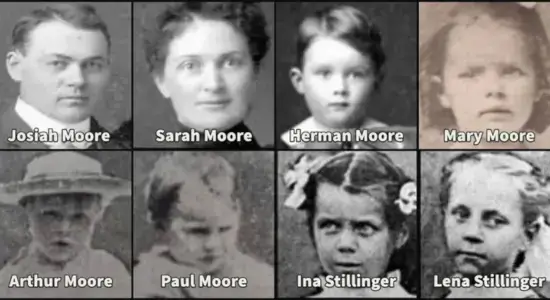 The eight victims of the Villisca Axe Murders.
The eight victims of the Villisca Axe Murders.
The Crime Scene
The victims were found in their beds, their faces covered by sheets. The killer used an axe to strike each victim. The crime scene was particularly chilling because the axe was found cleaned, and there were no fingerprints or clear physical evidence left behind. The killer’s identity remains unknown, and the murder weapon, while thoroughly cleaned, left no trace of the assailant.
 Villisca, Iowa, around the time of the murders.
Villisca, Iowa, around the time of the murders.
The Investigation
The investigation began with local law enforcement but soon gained national attention. Reverend George Kelly, a traveling preacher, became the main suspect. He was seen near the Moore house on the night of the murders and was arrested. However, due to insufficient evidence, he was eventually released. Over the years, other suspects were proposed, but none have been definitively linked to the murders.
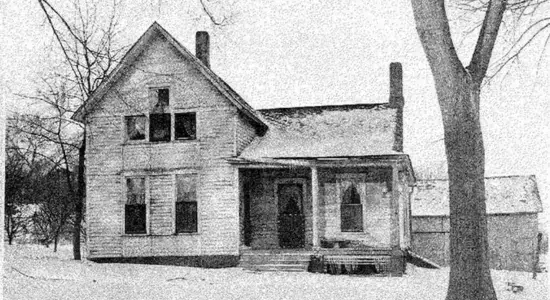 The Moore family home circa the time of the axe murders.
The Moore family home circa the time of the axe murders.
Theories Behind the Murders
There are several theories about the motive behind the murders and why the killer left no trace. Some believe that the killings were committed by a serial killer, while others propose that the killer was a family member or someone with a personal vendetta. A popular theory is that the crime was carried out by someone with intimate knowledge of the Moore family, as the crime occurred so quietly that no one heard the killings take place.
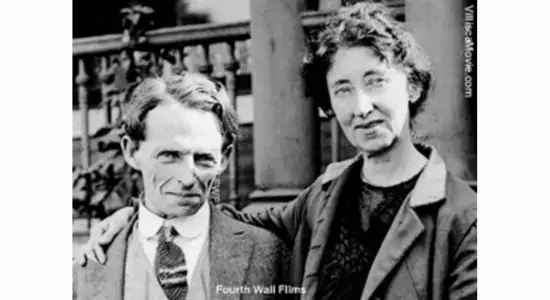 Lyn George Jacklin Kelly (L) and Laura Kelly (R).
Lyn George Jacklin Kelly (L) and Laura Kelly (R).
Another theory involves religious fanaticism. Reverend Kelly’s strange behavior and eccentric beliefs have led some to speculate that the murders were committed due to his obsession with religious matters. However, none of these theories have been proven.
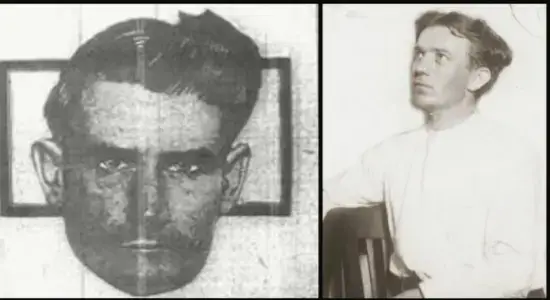 Henry Lee Moore (L) and William Mansfield (R).
Henry Lee Moore (L) and William Mansfield (R).
Theories of Environmental Causes
One of the most fascinating theories is that the crime could have been driven by environmental factors, such as a change in climate, a mental breakdown, or an economic hardship that pushed someone over the edge. Some experts believe that external stresses during the period could have contributed to the motivations behind the murders.
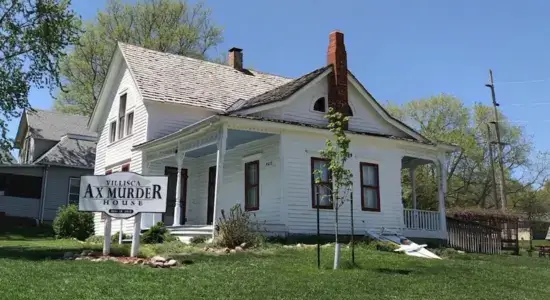 The Moore family home in Villisca, Iowa, has since become a popular tourist attraction. Image: Google Earth.
The Moore family home in Villisca, Iowa, has since become a popular tourist attraction. Image: Google Earth.
A Continuing Mystery
The Villisca Axe Murders have remained unsolved for over a century, contributing to their status as one of the most chilling and enduring murder mysteries in U.S. history. The brutal nature of the crime, the absence of clear evidence, and the eerie fact that the crime occurred in a small, quiet town only deepens the mystery surrounding it.
Did you know ? that Villisca, Iowa, is now known as one of the most haunted towns in the U.S.? The Moore house, now a tourist attraction, draws visitors from all over the country, many of whom report strange and unexplained phenomena! ????
Interested in learning more about true crime mysteries and unsolved historical events? Bookmark Fact Fun to explore more fascinating stories and real-life mysteries from around the world! ????
ref : Historic Mysteries






